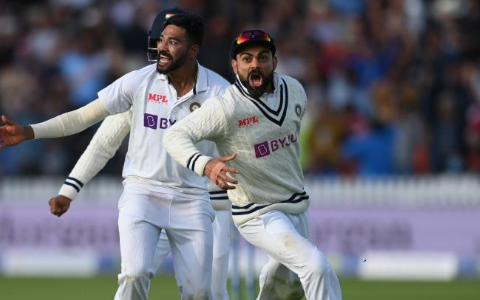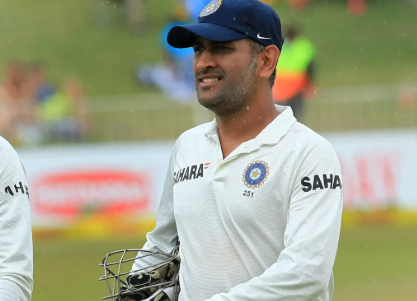Understanding Cricket Formats: Test, ODI, and T20 Explained
Cricket encompasses three distinct formats: Test, One Day Internationals (ODIs), and T20. Each format offers a unique blend of strategy, pace, and entertainment. Test cricket showcases traditional tactics over five days, while ODIs present a fusion of aggression in a 50-over framework. T20, on the other hand, revolutionizes the game with its brisk, 20-over matches. Understanding these differences is crucial for appreciating the sport fully and determining which format resonates most with individual preferences.
The Essence of Test Cricket
Test cricket, often regarded as the purest form of the game, embodies a unique blend of strategy, endurance, and skill. This format demands meticulous planning, where teams develop intricate batting strategies to accumulate runs over five days.
Players must exhibit patience, adapting their approaches based on pitch conditions and the bowler’s tactics. Conversely, effective bowling techniques are crucial, requiring bowlers to master variations such as swing, spin, and seam to outwit batsmen.
The mental fortitude displayed in Test matches sets it apart from shorter formats; players confront pressure and fatigue while pursuing victory. Ultimately, the essence of Test cricket lies in its ability to challenge the intellect and resilience of its participants, showcasing a sport that celebrates both artistry and athleticism.
Read more: Top Cricket Legends Who Changed the Game Forever
One Day Internationals: A Balanced Approach
While Test cricket emphasizes endurance and strategy, One Day Internationals (ODIs) offer a dynamic blend of aggression and tactical planning.
Emerging in the 1970s, ODI history marks a significant evolution in cricket, catering to a broader audience with its limited overs format.
Teams employ various ODI strategies, balancing aggressive batting with effective bowling to control the game’s pace.
Captains must adapt to changing conditions, often shifting their approach mid-match to exploit weaknesses in the opposition.
The result is a captivating contest that maintains the spirit of cricket while embracing a more accessible and entertaining format.
Ultimately, ODIs encapsulate the essence of teamwork and strategy, appealing to both purists and casual fans alike.
T20: The Fast-Paced Thrill
How has T20 cricket transformed the landscape of the sport?
The introduction of the T20 format has revolutionized cricket, appealing to a diverse audience and creating a vibrant T20 fanbase. This format emphasizes rapid gameplay, demanding innovative T20 strategies that prioritize aggressive batting and dynamic bowling.
Teams now focus on maximizing runs within a limited time, leading to exhilarating matches filled with nail-biting finishes. The shorter format has attracted younger spectators, fostering a culture of excitement and entertainment.
Moreover, T20 leagues worldwide have propelled players into stardom, enhancing the sport’s global reach. As cricket evolves, T20 stands at the forefront, symbolizing a shift towards fast-paced action that continues to redefine traditional perceptions of the game.
Comparing Formats: Key Differences
Cricket’s various formats—Test, One Day International (ODI), and T20—each present distinct characteristics that cater to different audiences and playing styles.
The format duration significantly influences the gameplay; Tests span up to five days, allowing for strategic depth, while ODIs last 50 overs per side, and T20s compress the action into just 20 overs.
Consequently, scoring strategies vary: Tests emphasize patience and technique, requiring teams to build innings over time, whereas ODIs balance aggression and caution, promoting run accumulation within a limited timeframe.
T20, on the other hand, prioritizes explosive batting and quick scoring, appealing to a fast-paced, entertainment-seeking crowd.
Each format offers unique challenges, ensuring diverse experiences for players and fans alike.
Choosing Your Cricket Experience
What factors influence a spectator’s choice of cricket experience? Primarily, personal preferences regarding time commitment, excitement level, and the nature of cricket culture play significant roles.
Test matches offer a deep, strategic engagement, appealing to purists who appreciate the tradition and nuance over five days. Conversely, ODIs and T20s cater to those seeking faster-paced action and immediate gratification, enhancing fan engagement through entertainment and drama.
The choice often reflects an individual’s lifestyle; for some, the leisurely experience of a Test match is a cherished ritual, while others may prefer the electric atmosphere of a T20 game.
Ultimately, understanding these dynamics empowers spectators to select an experience that aligns with their values and desires, enriching their connection to the sport.
Conclusion
In conclusion, each cricket format—Test, ODI, and T20—offers a unique lens through which to appreciate the sport, catering to varying tastes and preferences. While some may argue that shorter formats lack the depth of Test cricket, the strategic nuances and excitement of ODIs and T20s provide their own rich experiences. Ultimately, embracing the diversity of these formats enhances the enjoyment of cricket, allowing fans to engage with the game in ways that resonate with their individual interests and lifestyles.





